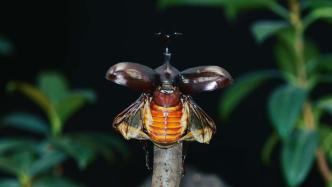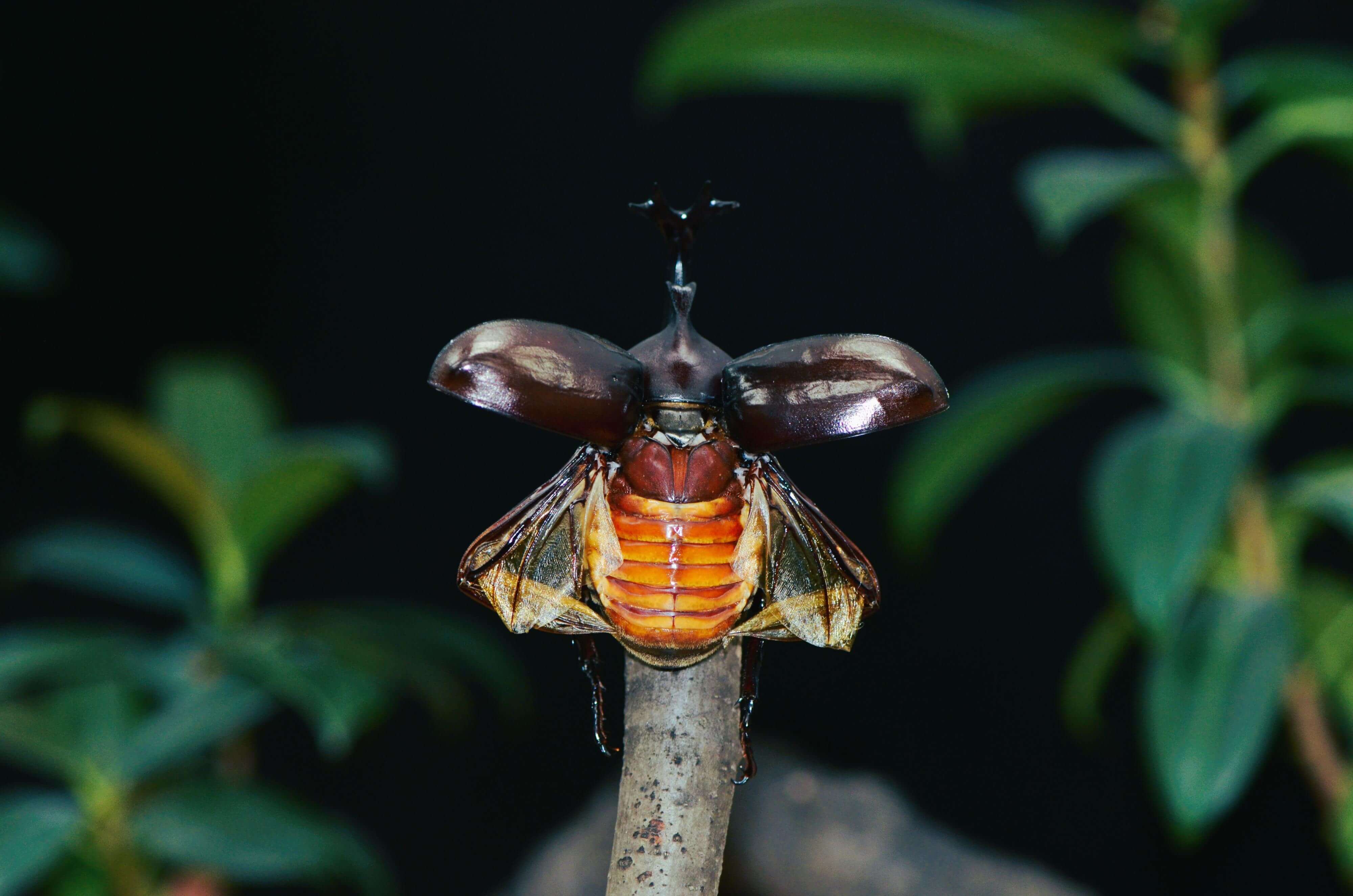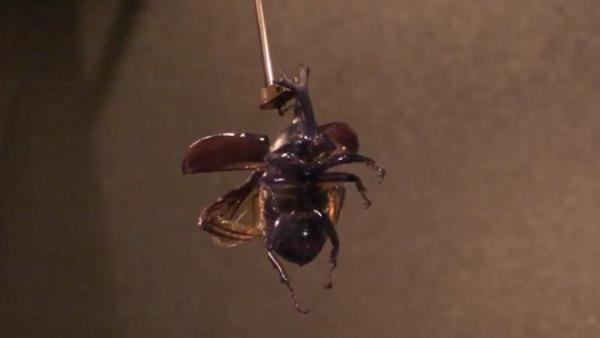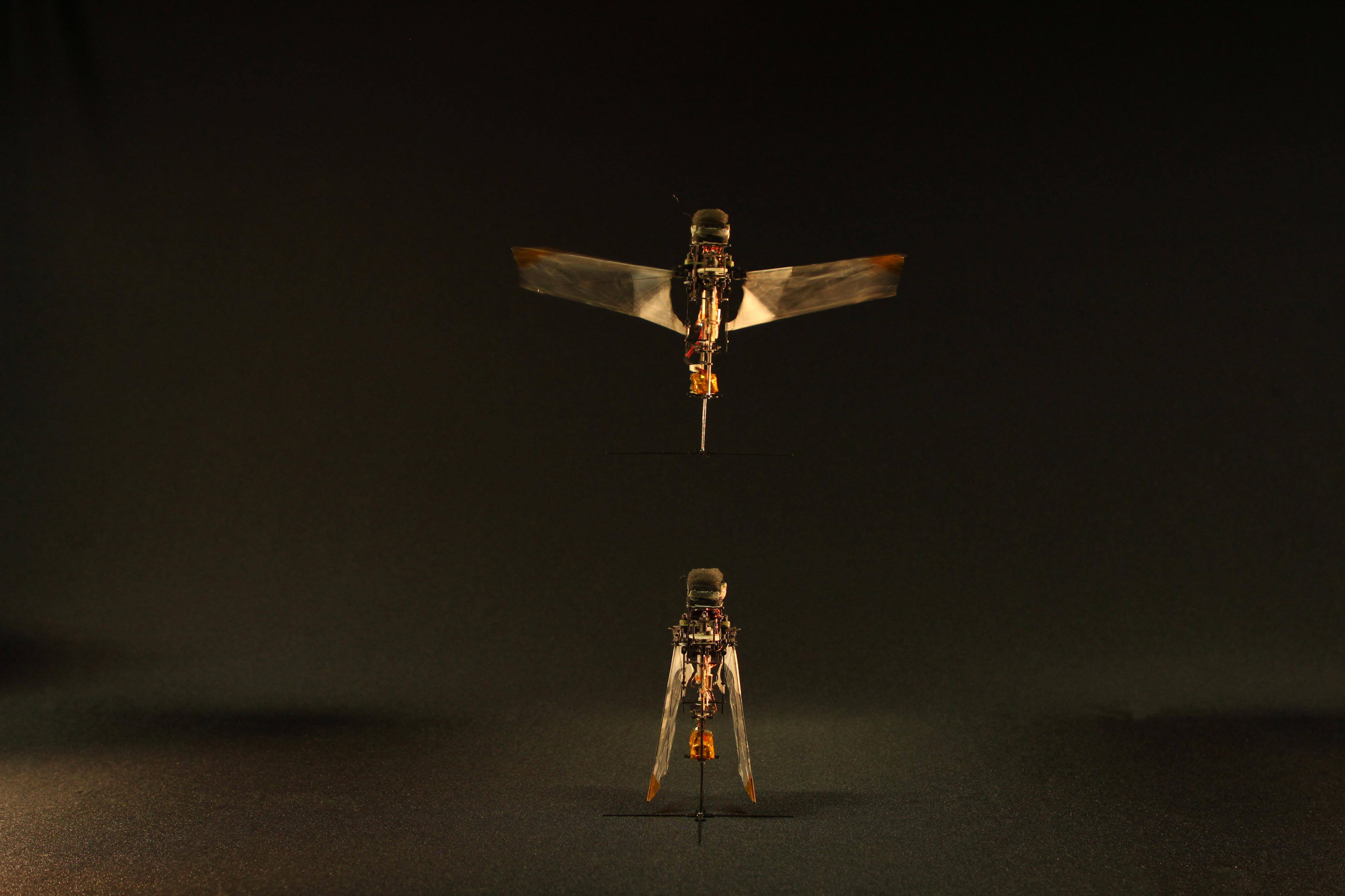

The rhinoceros beetle, commonly known as the "single-horned beetle," has two pairs of wings: a pair of thick elytra, which serve as front wings, and a pair of membranous hind wings that can be folded like origami.
Beetles have the most complex wing-flapping and wing-folding mechanisms of all insects.
On the evening of July 31, Beijing time, a latest study published online in the international academic journal Nature revealed the mystery of the flapping and folding of the wings of the rhinoceros beetle, and inspired people on how to improve flapping-wing aircraft.
Compared with fixed-wing or rotary-wing aircraft, flapping-wing aircraft have the advantages of higher flight efficiency, strong concealment, strong maneuverability and strong adaptability. The wings of flapping-wing aircraft can flap up and down like the wings of birds or insects to make timely adjustments.
In the past decade, scientists have developed a variety of flapping-wing robots that mimic insects, but none of them can fold their wings like insects do—folding their soft but strong wings when they collide or rest. These robots all use fully extended flapping wings.

They applied their latest findings to the design of a micro flapping-wing aircraft, achieving rapid closure of its wings within 100 milliseconds while allowing it to release the wings within a flapping cycle at various frequencies.
Hoang-Vu Phan told The Paper that this tiny flapping-wing robot can be used in small spaces that humans cannot enter, such as performing search and rescue missions in collapsed buildings. In this case, the flapping-wing robot can fold its fragile wings and store them on its body after flight, making it easier to move in narrow spaces and reducing the risk of damage. It can also help biologists study the flight mechanics of insects and explore the wild behavior of insects in forests. This is something that traditional rotorcraft drones cannot achieve.

A micro flapping-wing aircraft that can quickly close its wings.
Birds and bats have well-developed flight muscles such as pectoral muscles, which allow them to extend their wings when flying, and fold them close to their bodies when resting. Insects can also flap and fold their wings in this way, but the detailed mechanism has always been a mystery.
The rhinoceros beetle, commonly known as the "single-horned beetle," has two pairs of wings: a pair of thick elytra, which serve as front wings, and a pair of membranous hind wings that can be folded like origami.
When a beetle flies, it needs to first raise its elytra, then unfold its relatively "huge" hind wings, and mainly rely on flapping its hind wings to provide flying power, so as to achieve flying movements such as taking off and hovering. When it stops, its pair of hind wings can be folded and hidden under the elytra.
Hoang-Vu Phan and colleagues found that the beetle's wings need to go through two processes to open, among which the movement of its hind wings does not require muscle control.
They found that the release and unfolding of the beetle's hind wings are passive, and its folding and stowing is also passive. In the absence of elytra, its hind wings will remain lifted. Therefore, in the first stage, when the beetle opens its elytra, its hind wings will partially spring open like a spring, showing the characteristics of an underdamped spring-mass system.
The researchers found that the beetle's hind wings only unfold when it starts flapping. That is, in the second stage, the beetle flaps its hind wings while the base of the hind wings rises and the wingtips unfold, entering a flying state.
To retract the hind wings, the beetle needs the propulsion of the elytra, using one leading edge to push the other leading edge. To verify this, Hoang-Vu Phan and his colleagues removed one of the beetles' elytra and found that the beetle could not retract its hind wings without the elytra.
Previously, little was known about how the beetle's hind wings are lifted to the flying position and then folded again. Some studies have suggested that the beetle's chest muscles drive the movement of the base of its hind wings, but there is a lack of experimental evidence to support this theory. The latest published research evidence shows that the release of its hind wings is related to the elytra, and its folding is driven by the elytra.
Inspired by the above observations, researchers including Hoang-Vu Phan created a microrobot that mimics the passive expansion and retraction of beetle wings. The robot successfully took off and maintained flight.
Hoang-Vu Phan said in an interview with The Paper that the microrobot's wings are equipped with elastic tendons in the "armpits" to replace the beetle's elytra to facilitate the rapid closure of the wings within 100 milliseconds. This not only makes the robot more like an insect, but also allows them to passively spread their wings during takeoff, hover stably, and quickly retract their wings when landing or colliding during flight without the need for additional devices.